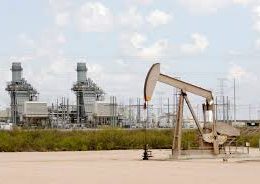On Thursday evening, McKinney conducted its first public meeting to present the preliminary findings of a draft environmental impact analysis regarding potential commercial service at the McKinney National Airport.
Voters will vote on a $200 million general obligation bond item in May to help fund future development at the airport, in relation to the construction of a new terminal to attract potential commercial airline service. The environmental assessment, which began in 2022, is a lengthy process and is independent of the bond election, according to Mitchell McAnally, aviation leader with Garver.
The draft environmental analysis will be reviewed by the Texas Department of Transportation’s aviation administration and the Federal Aviation Administration, followed by public comment and a formal public hearing period. During the presentation, McAnally discussed the impact on floodplains, wetland streams, noise impact, and traffic impact.
McAnally explained that the environmental analysis is based on a very high scenario of increased flights at the airport, while the bond election is based on a median scenario. He also described the methodology for the noise analysis, which showed that the FAA requires the use of an Aviation Environmental Design Tool (AEDT) for a 24-hour analysis to represent daily aircraft operations averaged over a year-long period.
The metric used in the study is DNL, or Day-Night Average Sound Level. McAnally presented draft noise level contour maps for 2026 and 2031, which show the benchmark 65 DNL levels that would result from the estimated additional 40 flights and compared them to noise contours if the city took no action to add commercial service to the airport.
McKinney National Airport Director Ken Carley stated that the bond election’s purpose is to develop funding for the project and continue discussions with the airline. The city council has been clear that there is no intent to start the project’s construction without expressed airline interest. McKinney City Councilman Patrick Cloutier explained that the bond election is a mechanism that the council considers the best way to finance a commercial terminal using general obligation bonds, and other financing methods are possible, such as public-private partnerships and revenue.
The draft environmental analysis still has to undergo review by the relevant agencies, followed by public comment and a formal public hearing period, and the findings presented at the meeting were preliminary environmental findings, according to McAnally.











